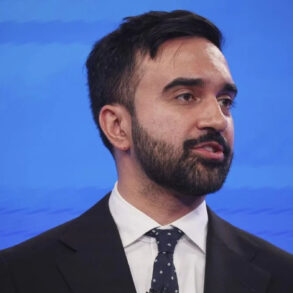The world is heading toward an unexpected crisis – not one of overcrowding, but of too few people. Global birth rates are falling, and the effects may soon ripple across economies, communities, and governments. In their new book After the Spike: Population, Progress, and the Case for People, economists Michael Geruso and Dean Spears warn that depopulation is not just a demographic trend but a major threat to human progress. Their work challenges the belief that fewer people will solve climate change, resource scarcity, and inequality. Instead, they argue that more people, living well, are essential for innovation, prosperity, and stability.
Michael Geruso and Dean Spears are economists at the University of Texas at Austin who specialize in population and health. Spears is also the director of a nonprofit focused on child survival in India. Their book draws on decades of demographic data, economic modeling, and environmental case studies. Their central claim is bold: global fertility decline, now below the replacement rate in two-thirds of all countries, threatens the future of human achievement and well-being.
Problems That Depopulation Will Create
Shrinking Workforce and Productivity Loss
As birth rates fall and life expectancy rises, the share of working-age people declines. Countries like Japan and South Korea already face shrinking labor pools. This means fewer workers to drive productivity, pay taxes, and support retirees. As older workers dominate the job market, innovation slows, and fewer young people are available to replace them.
Strained Public Budgets
Governments will need to spend more on healthcare, pensions, and elder care. By 2050, public spending in some nations could exceed 25 percent of GDP just to support aging populations. This crowds out spending on education, infrastructure, and even military budgets, forcing hard trade-offs.
Declining Economic Growth
Consumer spending, especially from people in their 30s and 40s, is vital to economic momentum. As populations age and shrink, consumption drops. This affects everything from housing demand to innovation investment. The drop in homebuyers, for instance, is already fueling real estate slumps in places like China.
Social Erosion and Community Collapse
In rural and aging regions, schools, stores, and local services shut down as younger generations leave or never arrive. Community ties fray, traditions disappear, and towns die. In countries like Italy and Russia, entire villages have been abandoned due to population loss.
Geopolitical Weakness
Countries with shrinking, older populations have less capacity to project power or respond to threats. Military recruitment suffers. Russia, for example, has struggled to meet troop goals despite offering incentives. Aging also reduces the will to fight—older societies prefer peace but may lack the means to defend themselves if necessary.
Problems That May Go Away
Lower Risk of War
Demographically young countries are more prone to conflict. As nations age, studies show their appetite and ability for war decline. Aged societies are less likely to support military aggression and more likely to divert funds toward welfare and stability.
Less Environmental Degradation
Slower population growth could reduce pressure on natural resources. But Geruso and Spears point out that pollution levels have fallen in growing countries like China through policy, not fewer people. Still, aging societies tend to consume less, possibly easing climate strain.
Reduced Global Competition for Resources
With fewer people needing food, energy, and water, pressure on global supply chains could ease. This might reduce prices and make it easier to address hunger and energy shortages—though only if production systems remain stable.
Shifting Budget Priorities
As military spending declines and the elderly population grows, budgets may shift toward healthcare, social services, and peaceful development. This could foster more investment in community well-being rather than military buildup
Critics of depopulation point to a slow-burning but existential threat. They warn that falling birth rates will lead to collapsing pension systems, disappearing cities, and national decline. They argue that without enough people to sustain economies, fund innovation, or maintain defense, the modern world risks falling backward. Some fear that low fertility could lead to social upheaval as shrinking populations drive economic stagnation, political instability, and even cultural extinction.
Others argue that fewer people could mean more resources per person and a chance to live in better balance with the planet. Some environmentalists welcome a drop in population as a way to slow climate change and reduce ecological damage. They also point to the potential for technology, like artificial intelligence and robotics, to make up for lost labor and keep societies functioning smoothly.
A Call for Stabilization, Not Panic
Geruso and Spears don’t advocate for endless growth or authoritarian pronatalist policies. Instead, they want a global conversation about stabilizing population levels in a fair and sustainable way. They believe the first step is recognizing that depopulation is not a solution but a new challenge, one that requires long-term thinking and cooperation. As Spears says, “People are good for one another. That’s why lives today are better than before.”
In short, the future may not be crowded, but it could be empty in dangerous ways. What we choose to do now, individually, nationally, and globally, will shape whether the coming age of fewer people is one of decline or one of reinvention.
NP Editor: I believe these guys have examined the statistics correctly and see a legitimate problem, but they certainly don’t see the ramifications. What they are missing is that radical Islam is still a fast growing population and they are expanding their culture rapidly into Europe, Africa and Asia, and could very well displace the existing populations. This is a much bigger problem than just a simple lower population in the West.








